We flew into Haneda, Tokyo late evening and checked into the Villa Fontaine Hotel in the suburb of Ariake.
After an excellent buffet breakfast, which included re-acquaintance with chopsticks, we headed amongst the slow moving Tokyo traffic to the Meiji shrine - the first of many temples we were due to visit. After the tranquility of this woodland setting, we drove to bustling Shibuya and the famous scramble crossing.
We also had a look around the streets of Shinjuku where parts of the first Blade Runner were filmed. Didn't see any replicants as far as I am aware...
Our host at the afternoon's tea ceremony
The next day we went to the top of the Tokyo Government Building (45 floors and a free ride) for views of the city. A grey day unfortunately, but for most of the rest of the trip the sun shone upon us.
The entrance to the Imperial Palace.
Tokyo rush hour. On one occasion on the Tokyo train system I stood up and offered my seat to a lady, not realising that this is a bit of a no-no because in Japan the men seem to 'rule the roost' outdoors. However, after some hesitation, the lady took my seat and gave me a wave and a smile when she alighted.
The botanical garden in Shibuya - gorgeous. A grey afternoon but an oasis of tranquility in the heart of Tokyo.
Toilets in Japan are a thing to behold. Here's one with relatively simple instructions. I settled for warm seat only. Didn't fancy a rear end wash and brush up every time I sat down. Public ones have a music option - Why? I'll leave that to your imagination. Fancy a bit of The Who or the Stones whilst you are in the loo? You can get toilets like this in the UK but you'll pay thousands.
From Tokyo we travelled to the hill town Hakone and then took a cable car ride over the Owakudani volcanic valley with pungent, sulphurous gas occasionally enveloping us.
We stayed overnight in Mishima, a small city by Japanese standards. N.B. The greater Tokyo population is currently over 41 million. Mishima being a little less metropolitan than that, meant that we had to use sign language and gesturing in the non English speaking restaurant that we visited. However, the service was polite and friendly - as we found it to be everywhere we went. Note: There is no tipping in Japan - anywhere.
From Mishima we had a short ride through the countryside to the village of Oshino with its eight ponds of beautiful clear water. I practised my rudimentary spoken Japanese and managed to get us two cups of coffee from a market stall. Here we are on a sunny Saturday morning with sacred Mount Fuji behind us.
One of the ponds is called the mirror pond - you can see why below.
On to Matsumoto, regarded as the gateway to the Japanese Alps. The journey from Oshino was certainly through beautiful countryside.
Matsumoto - the place of the divine pine tree - and home to what is regarded as Japan's oldest castle. We tried a few Samurai poses.
Matsumoto is the birthplace of Yayoi Kusama. We visited the city's museum and enjoyed seeing some of her amazing work. No photography allowed but I managed a couple of quick snaps. Obviously not her below.
That is one big pumpkin.
In the old town district of Takayama we both tried cups of the local matcha. It's supposed to be very beneficial but I'm sticking to Yorkshire tea for the foreseeable...
Barrels of sake
A cook it yourself lunch in Takayama. Tender beef and tasty vegetables.
After lunch we visited Shirakawa-go, a village famous for its buildings with steep thatched roofs - steep so that the heavy winter snow would not be able to settle. The oldest of the houses are over 250 years old. Some of them are still inhabited and we were pleased to be able to visit one of them.
Next stop was Kanazawa on the coast of the Sea of Japan.
We had a delicious meal sitting at the counter in one of the small, busy Kanazawa restaurants - the Kiguramachi Kusamura. Chopstick handling developing well by this stage.
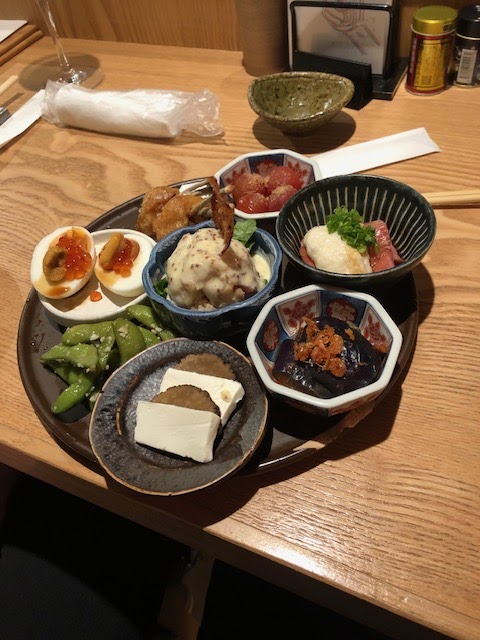
The Kenroku-en Garden in Kanazawa. Yet another beautiful Japanese garden and constructed during the Edo Period when Japan was a closed country (1603-1868).
One of the highlights of Kanazawa's Higashi-Chaya District, with its wooden houses and cobbled streets, is the gold leaf ice cream. Expensive but most enjoyable. Mask wearing is routine in Japan. The books say it is because of the high pollen count - more likely the vehicle emissions in cities and general concern for infection control.
Our hotels have been pretty good up to now but we were not impressed with our three-night stay in our Kyoto hotel - a small room and a lot of queuing for breakfast. However...
How's this for a drainpipe - tinkling sounds as the rain runs down.
The population of the metropolitan area of Kyoto is nearly 3.8 million people but there are tranquil spots to be found. Here we are in at the 14th century Kinkaku-ji - the Buddhist 'golden temple'.
Tea break at the golden temple.
Fast food lunch in Kyoto before heading into Gion - the entertainment and geisha district - to try and catch sight of a geisha.
I did catch sight of a maiko heading to her work in a restaurant. A maiko is an apprentice geisha.
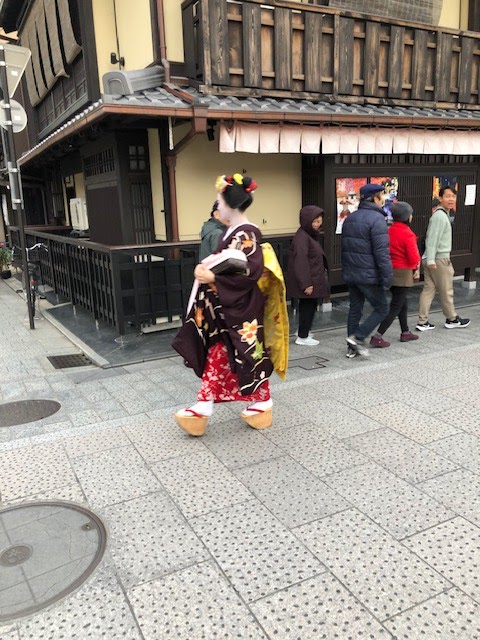
Not far from our hotel we looked up restaurants and, with the help of a local passer-by, found the Teppansosaku Lien restaurant down a narrow lane. We had our own private dining room and and out three course meal included Matsusaka beef - a rare wagyu. Delicious.
The dessert was called Monaka. Two crispy wafers with blue cheese ice cream inside - superb!
After our meal the chef came to talk to us - mostly with sign language, smile and bowing. We walked up the lane afterwards and after about 50 metres, for some reason we turned around to look back at the restaurant. There in the street were the chef and head waiter waving to us. Typical Japanese? I don't know, but they were lovely people.
I can't get used to hotel and shop staff bowing to me. It feels odd and bowing back to the hotel room staff seems even more weird. I tended to stick to 'good morning'.
A short drive from Kyoto is the town Nara, the capital of Japan in the 8th century. Nara is the home of the Todaiji Temple and the Great Buddha Hall which houses the reputedly largest bronze Buddha in the world.
There are sika deer everywhere.
This is Binzuru, one of the sixteen arahats, who were disciples of the buddha. He is said to have excelled in the mastery of occult powers. I was told that if I was to touch this chap on a part of his body that corresponds to a place on my own body that is painful and then touch corresponding place on my own body, the pain would go away. Disappointingly and unsurprisingly, it didn't work for me. Maybe I'm not Zen enough.
The house of a former samurai.
Even the road work barriers are deer friendly. In Japan they think of everything!
Back in Kyoto we tried our hand at sweet making. Too sweet for me though.
Nishiki Market, one of Kyoto's thriving market streets where there is a huge range of food on offer.
Friday 29 November. Breakfast then a short ride to Kyoto station to catch the bullet train (the Shinkansen) to Hiroshima.
Sixteen carriages, very smooth and as the name implies - very fast.
Before visiting the hypocentre of the atomic explosion on 6 August 1945, we took the ferry to Miyajima Island, home to the Itsukushima Shrine, the orange tori gate and of course - many deer.
Two views of the A Bomb Dome, the only structure left standing in the immediate area of the bombing.
We visited the Peace Memorial Museum which, as you can probably imagine, was a very sombre experience.
The cenotaph for the A-Bomb victims in the Peace Memorial Park. The stone chest in the centre holds the names of all the victims.
The children's peace memorial to commemorate the child victims.
View of Hiroshima from our hotel window.

Sunrise the following morning.
After a second enjoyable bullet train journey, we arrived at our final city destination - Osaka.
Saturday crowds below and the famous Running Man.
After another internet search we found a fabulous small restaurant run by Yassan, the owner. He specialises in okonomiyaki and he includes his own secret ingredients for the sauce. I had been looking forward to an authentic okonomiyaki all trip and was not disappointed. Our okonomiyaki was cooked on the teppan (hot plate) in front of us. The ingredients included: wheat flour, cabbage, meat, seafood, seaweed and bonito flakes. It was delicious, especially when accompanied by a kimchi starter, Japanese beer and then sake.
These fish are living a peaceful, unmolested life in a pool by the side of a city street. Could such an occurrence be the norm in the UK? I don't think so. The Japanese people are very civilised - not perfect - but they put us to shame with their calm behaviour, good manners, litter free streets and general cleanliness.
In every shop that we went to - yes, every shop, Christmas music was playing - this is mid November!
I like Andy Williams and Dean Martin now and again but not every day. The Japanese seem to enjoy any excuse to celebrate and Christmas is big in Japan.
Osaka by night below.
The Santa Parade for charity below. It was like a red and white fancy dress London Marathon.
Another delicious cook at the table meal - this one was started off by a member of the restaurant staff and then we had to do the rest.
Our last day in Osaka. I found a record shop piled high with vinyl. Naturally, everything was labelled in Japanese and so navigation was difficult. Japan is not expensive for tourists. Eating out is cheap and so is vinyl. I resisted temptation and mindful of my already crammed suitcase I bought only one album. 1000 yen (£5) for brand new vinyl - can't be bad.
Views from our hotel.
Before our overnight flight home we went out for one last meal. No photographs on the menu for this one and we did not realise that it was an Unagi (freshwater eel) restaurant until we sat down. We are not fans of eel. Trish had an eel omelette and I had stuffed eel. The Asahi helped the digestion!
I thoroughly recommend Japan.











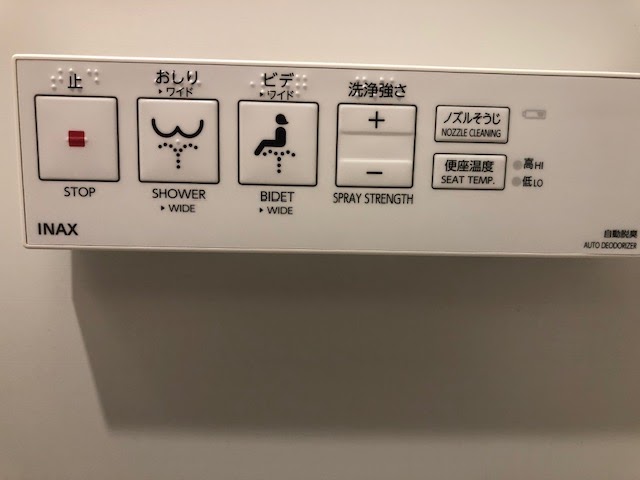
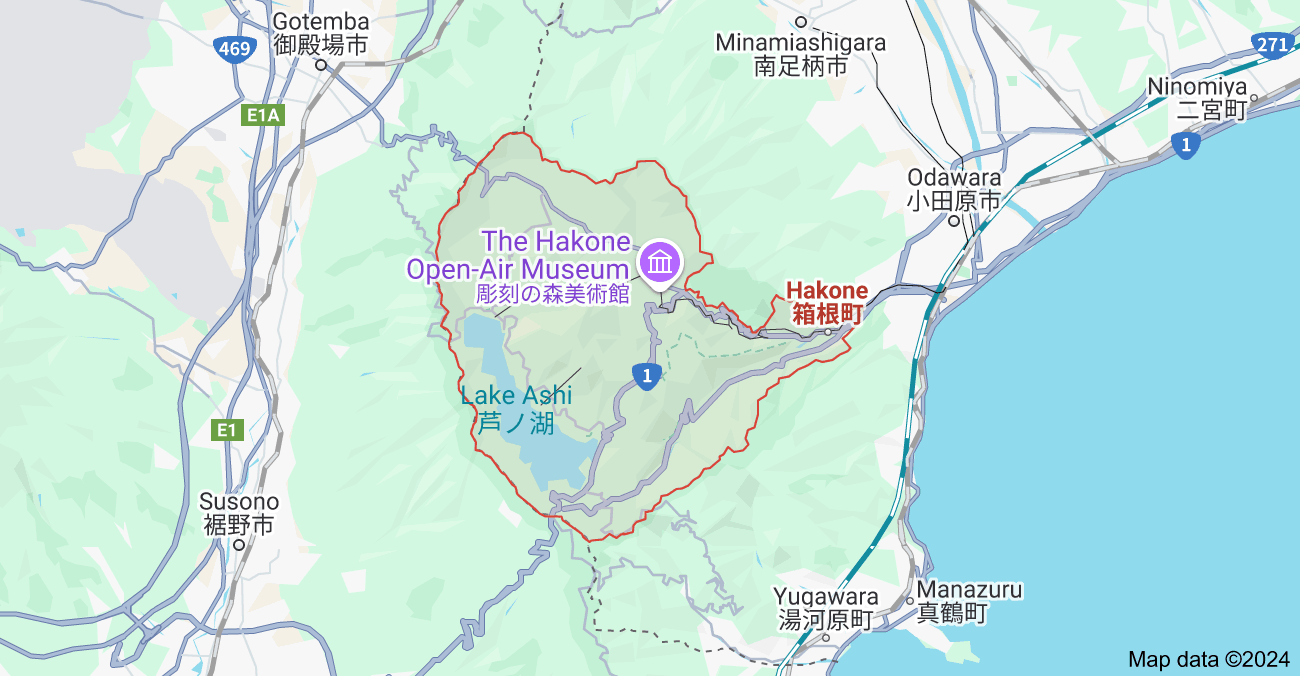



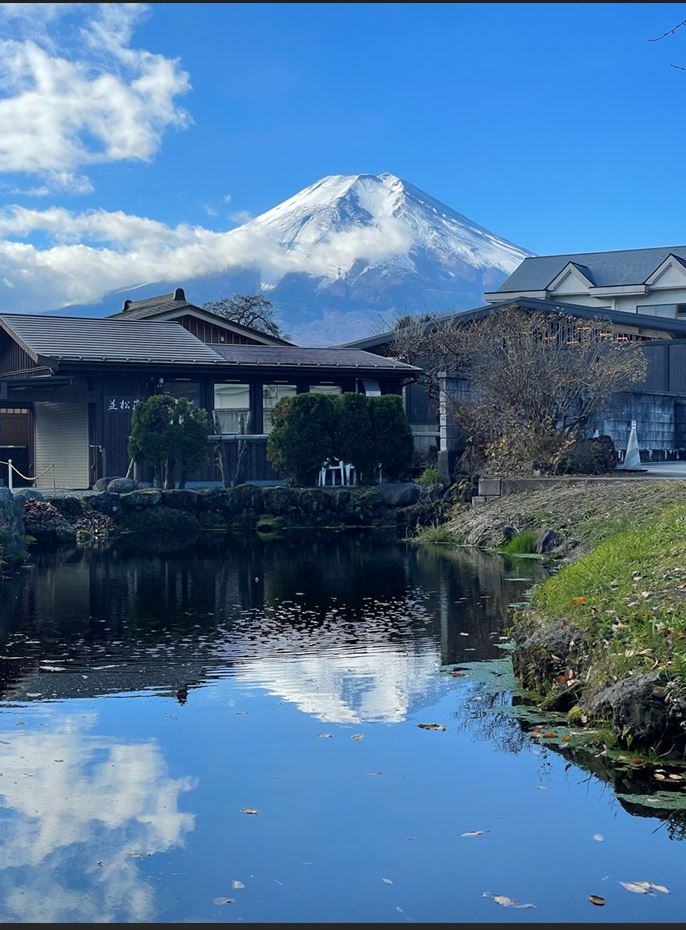




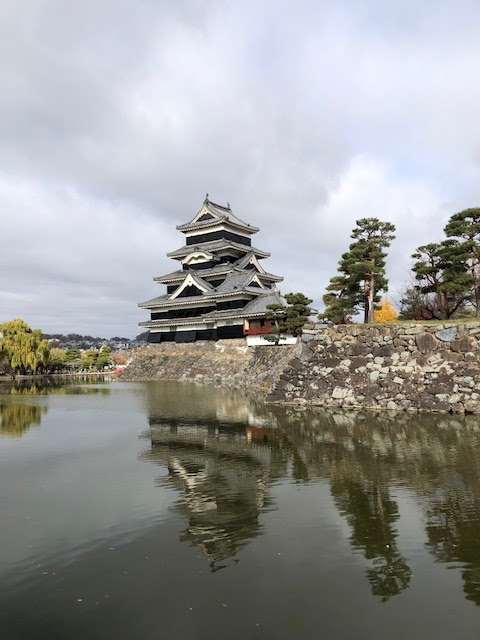















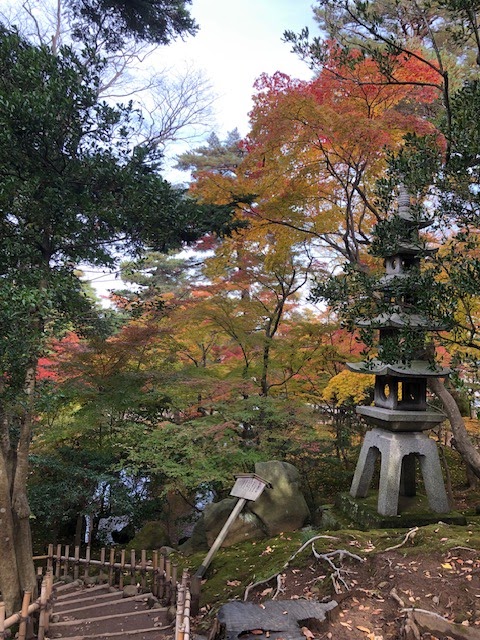





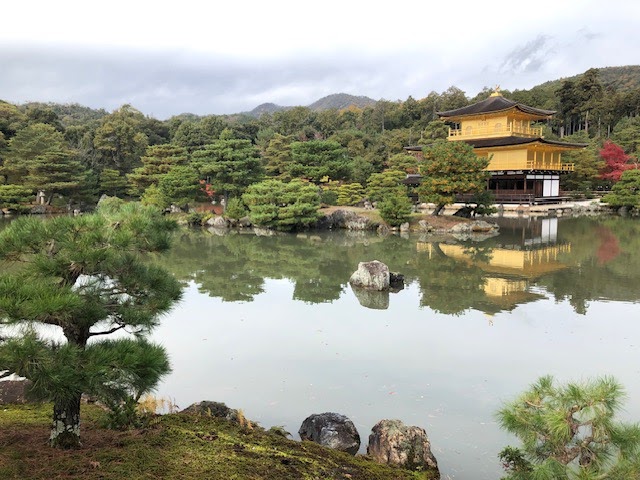




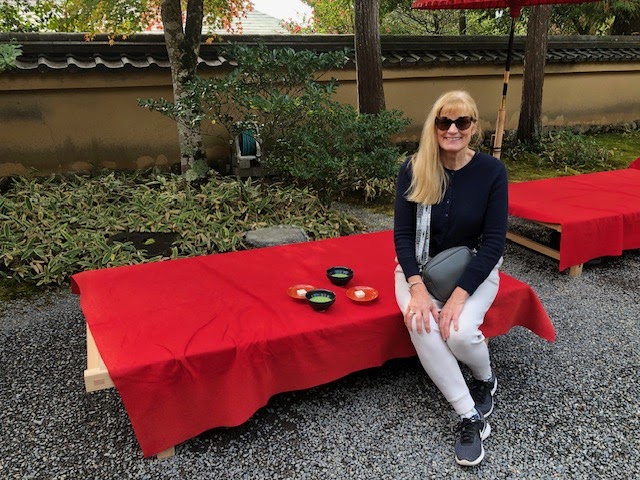







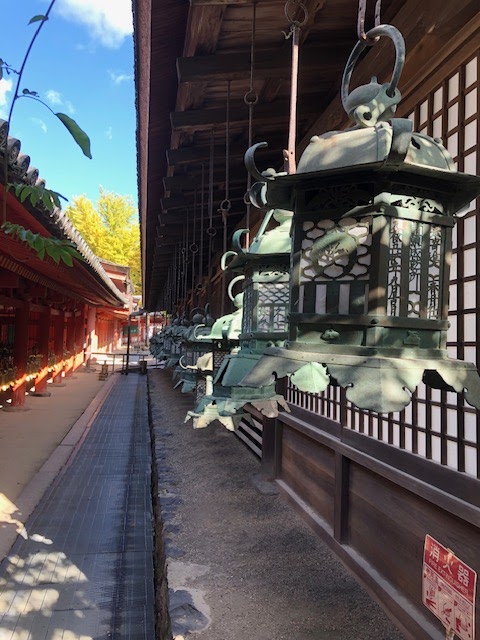


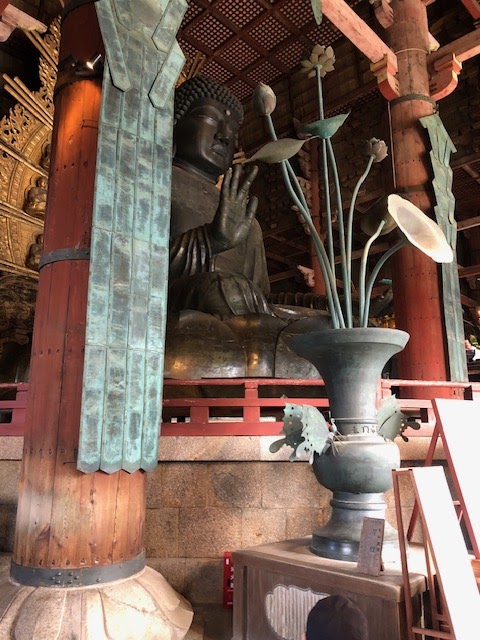




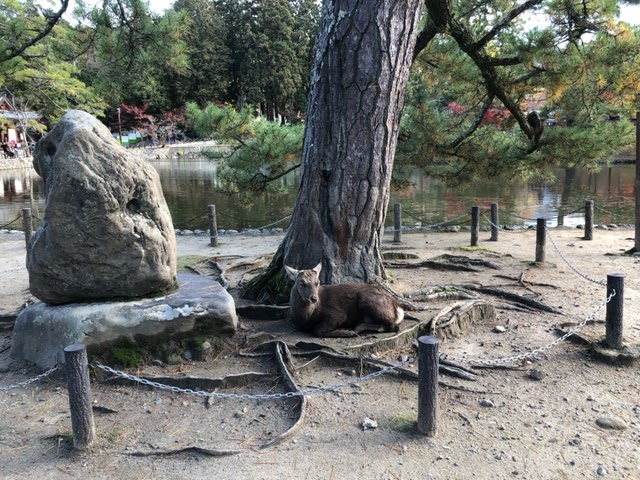
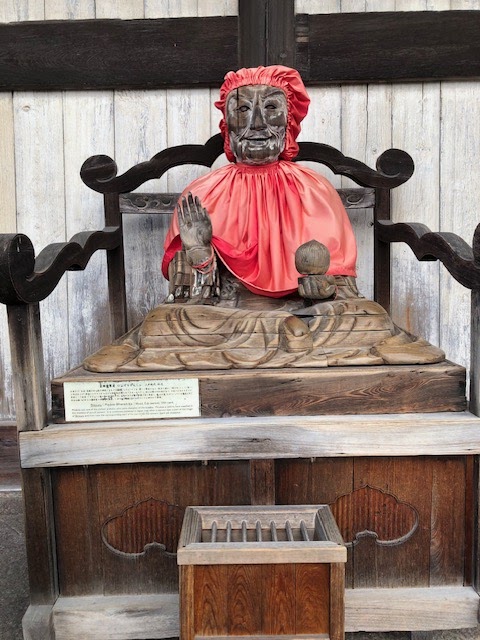





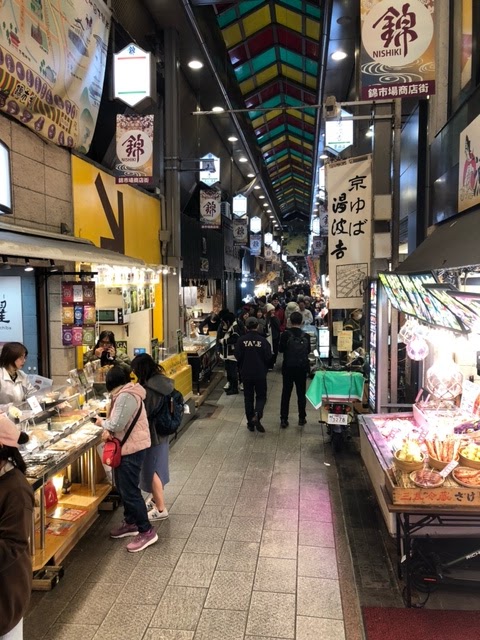



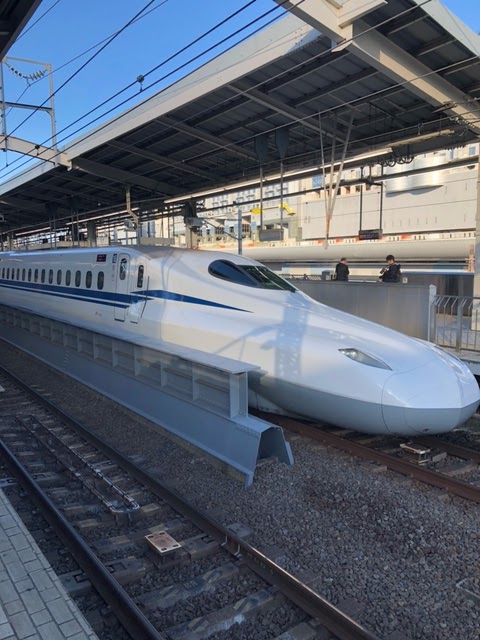



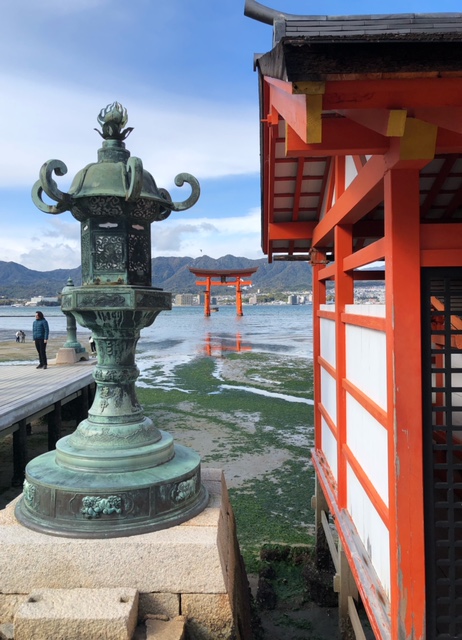
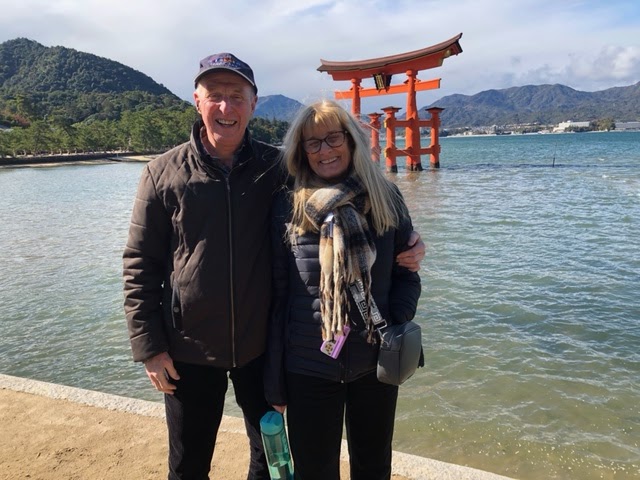

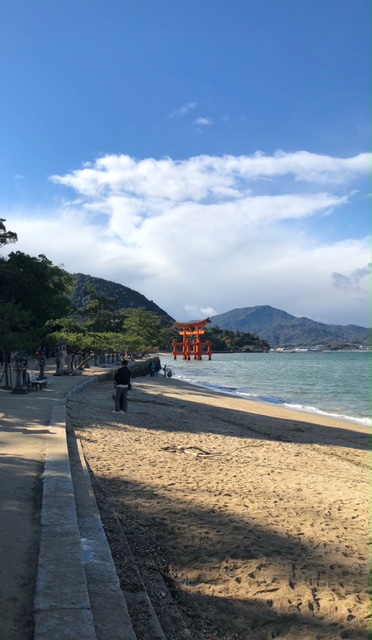










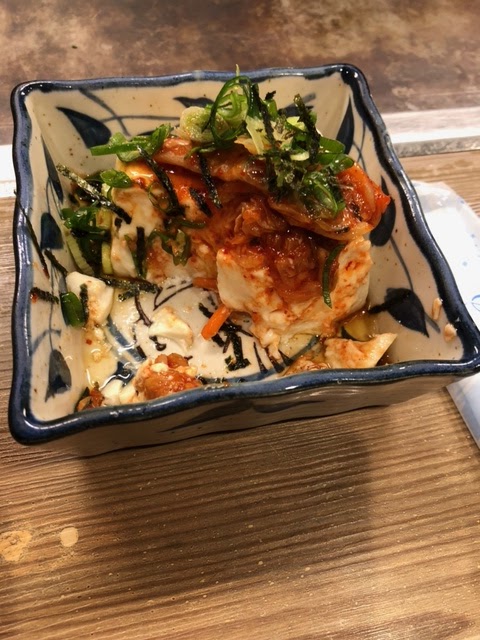

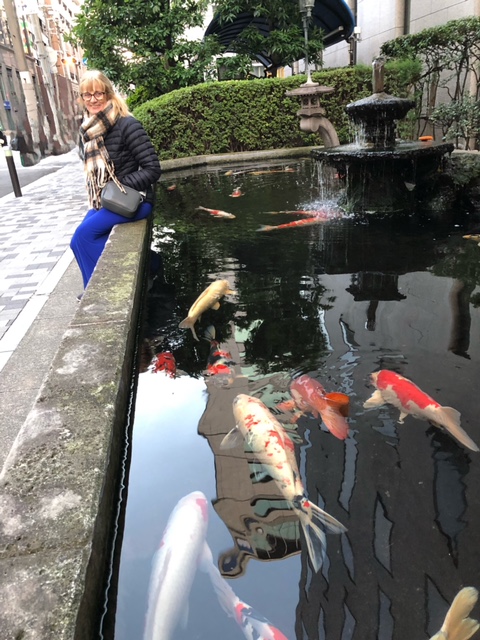

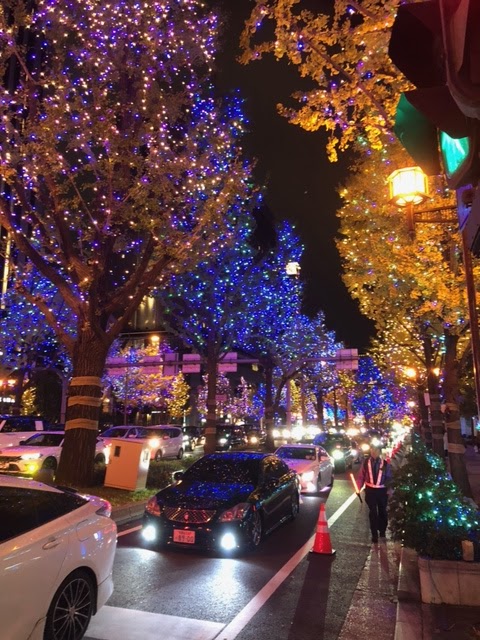

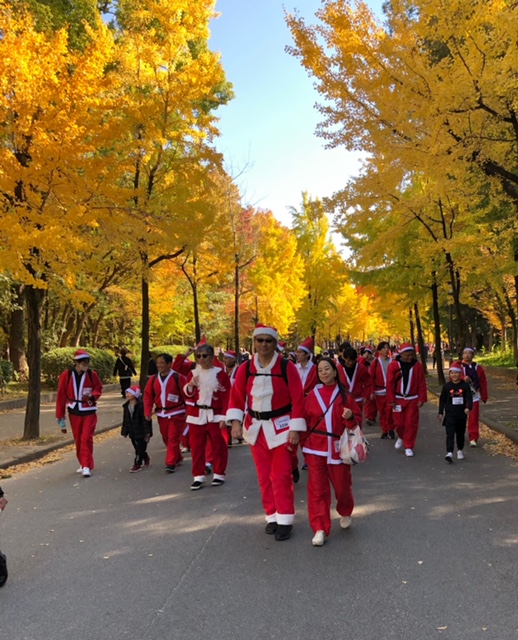
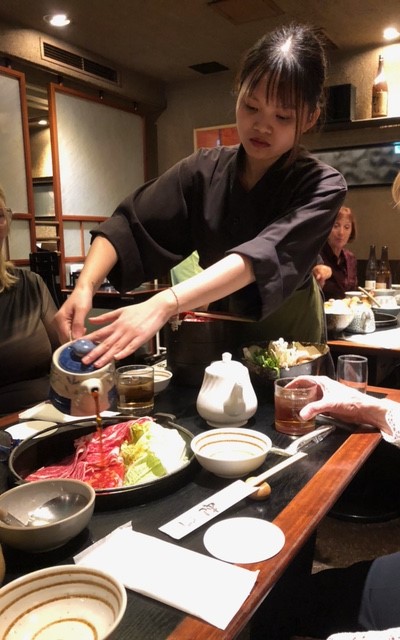









1 comment:
Absolutely brilliant to be able to share your Japanese experience. You certainly packed a lot into your visit, and it all looked amazing.
Post a Comment